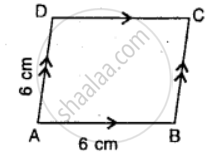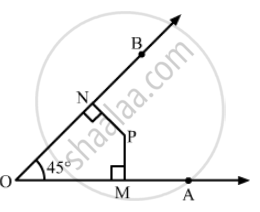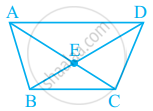Advertisements
Advertisements
Question
Write, giving reason, the name of the figure drawn alongside. Under what condition will this figure be a square.

Solution
Since, all the sides of the given figure are equal.
i.e. AB = BC = CD = DA = 6 cm
∴ The given figure is a rhombus.
This figure shall be considered as a square, if any angle is 90°.
APPEARS IN
RELATED QUESTIONS
ABCD is a parallelogram, AD is produced to E so that DE = DC and EC produced meets AB produced in F. Prove that BF = BC.
Define the following term Convex Quadrilateral .
In a quadrilateral, define of the following Exterior .
Complete of the following, so as to make a true statement:
A quadrilateral has .... diagonals.
In Fig. 16.19, ABCD is a quadrilateral.
Name a pair of opposite angles.

A quadrilateral has all its four angles of the same measure. What is the measure of each?
In Fig. 16.20, find the measure of ∠MPN.

In a quadrilateral ABCD, the angles A, B, C and D are in the ratio 1 : 2 : 4 : 5. Find the measure of each angle of the quadrilateral.
Complete the following statement by means of one of those given in brackets against each:
f consecutive sides of a parallelogram are equal, then it is necessarily a ..................
Mark the correct alternative in each of the following:
The opposite sides of a quadrilateral have
Use the following figure to find the value of x

ABCDE is a regular pentagon. The bisector of angle A of the pentagon meets the side CD in point M. Show that ∠AMC = 90°.
In a quadrilateral ABCD, AO and BO are bisectors of angle A and angle B respectively. Show that:
∠AOB = (∠C + ∠D)
Two diagonals of an isosceles trapezium are x cm and (3x – 8) cm. Find the value of x.
The diagonals of a rhombus are 6 .cm and 8 cm. State the angle at which these diagonals intersect.
One angle of a hexagon is 140° and the remaining angles are in the ratio 4 : 3 : 4 : 5 : 4. Calculate the measures of the smallest and the largest angles.
A quadrilateral can be drawn when all the four angles and one side is given.
In given figure, What is AE + EC?
In given figure, What is BD – DE?
